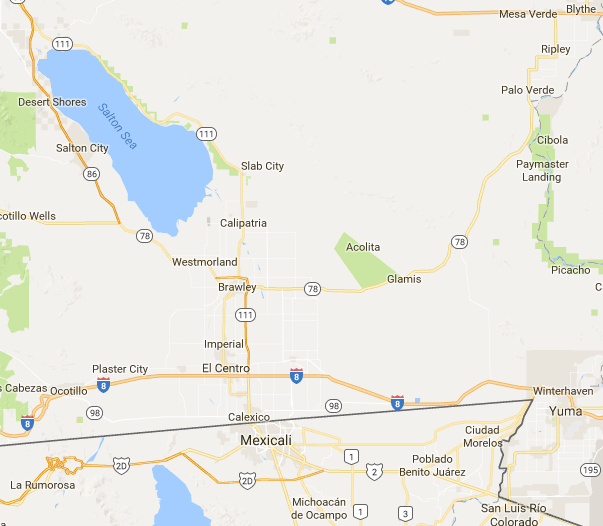Hello all!
I would like to share with you all a few documents that caught my eye from the Imperial Valley Records, which I have been scanning for the past few weeks. These documents, in my opinion, are the sort that could launch a thousand research papers. At the same time, I’ve been thinking about the significance of the Imperial Valley’s geographic location and the power of place upon local discourse. If you recall from my blog post from last week, I showed a map of the Imperial Valley. Here it is again:
 So, as you can see, it’s located on the border between southern California and Mexico. The document I’m about to describe illustrates some of the social, economic, and political power dynamics that took place at the dawn of the twentieth century in this region.
So, as you can see, it’s located on the border between southern California and Mexico. The document I’m about to describe illustrates some of the social, economic, and political power dynamics that took place at the dawn of the twentieth century in this region.
In a newspaper clipping entitled “Capital Paper Endorses All-American Canal,” the author provides the text of an editorial published in The Washington Times which endorses the construction of the All-American Canal, a water project of the Imperial Irrigation District. Thus, in the subsequent editorial
“Anything that Mexico Controls is Not All-American,” the author
encourages congress to move forward with the Kettner Bill, which would
finance the canal. Pay attention to the rhetoric of the canal’s name. All-American.

The author describes how the Imperial Valley, though beautiful, needs more water to support its $40,000,000 farming industry with over 60,000 residents. Access to water without the canal, according to the author, relied upon the people of Mexico, who if they chose, “or if in the case of international disagreement it was thought desirable, could in a single day wipe out the great investments in the Imperial Valley and return it to its former desolate and waterless condition.” An “All-American” canal would remove this threat by establishing “water control where it should be–on the American side of the boundary.”
At the end of the editorial, the author explains the penultimate reason for constructing an “All-American Canal”: “It means making one more thing in America all-American.” Sound familiar at all?
Given the geographic context of the Imperial Valley on the borderlands between California and Mexico, this editorial illustrates racial tensions in southern California that had carried over from the 1800s and continued on through the twentieth century. As a historian, this document blew me away. Not only does it shed light on the time period’s xenophobic fears and isolationist discourses, it reveals something both frustrating and illuminating as a historian: history often repeats itself in unexpected ways.